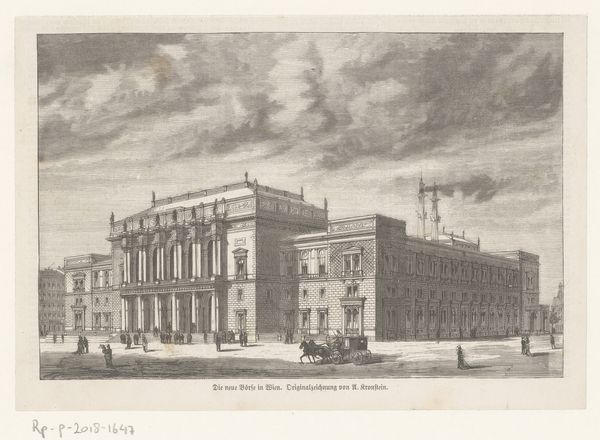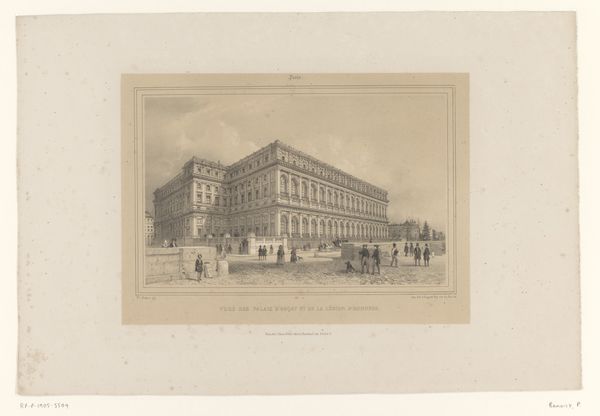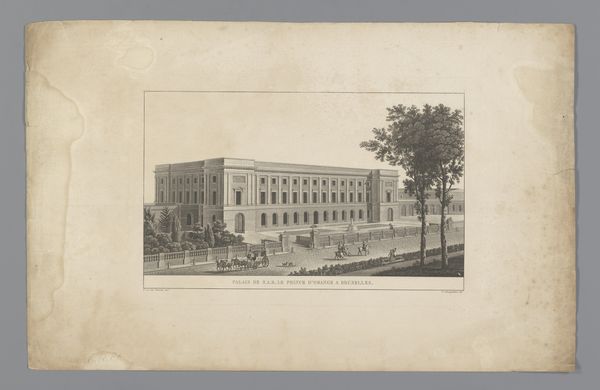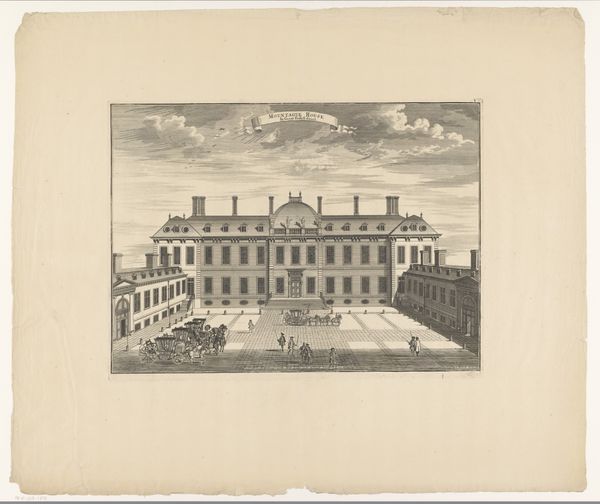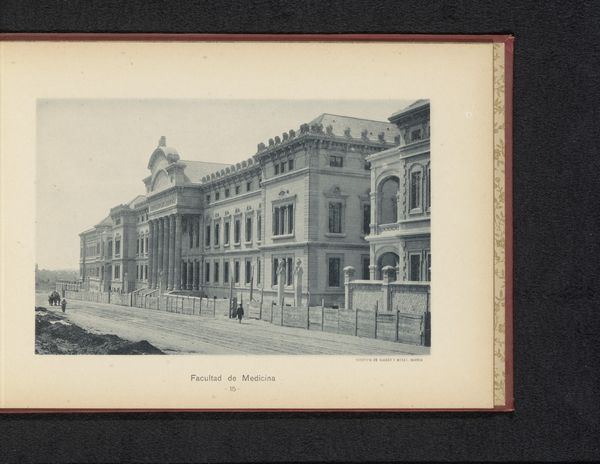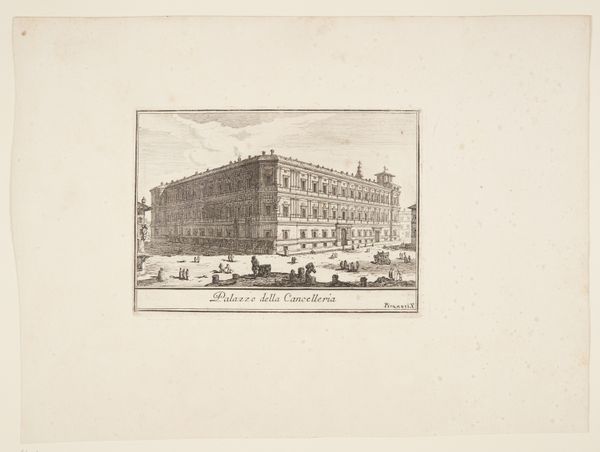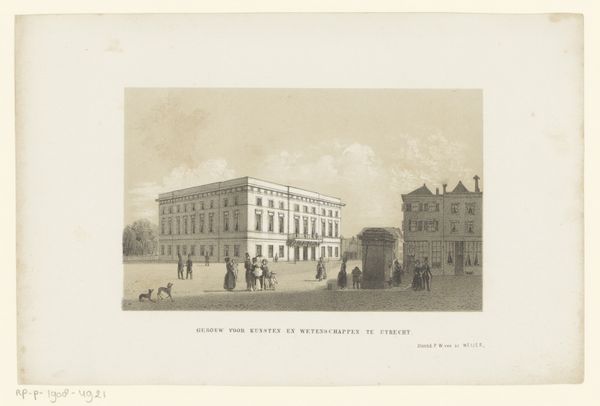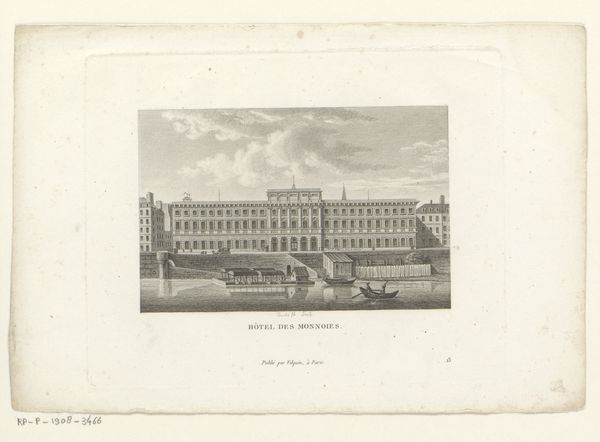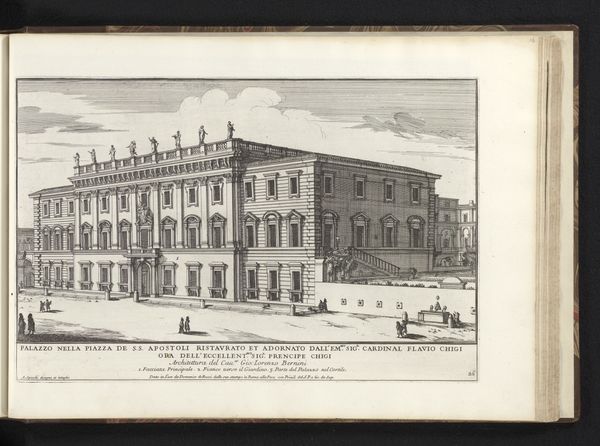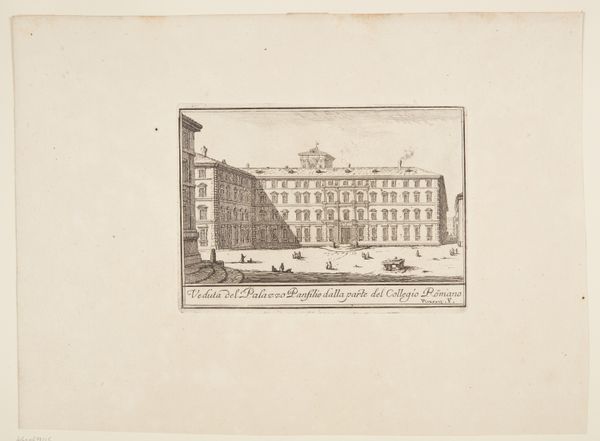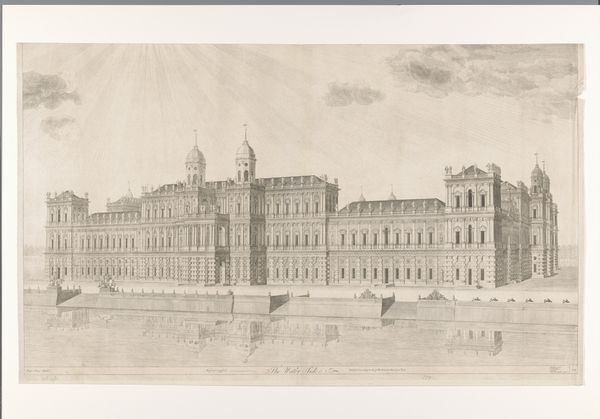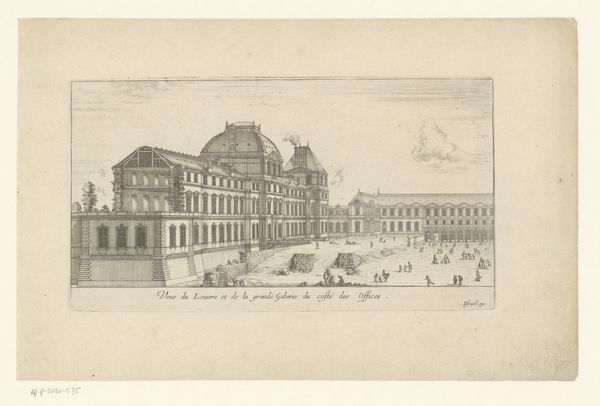
drawing, print, engraving
#
drawing
#
neoclacissism
# print
#
cityscape
#
engraving
Dimensions: height 226 mm, width 310 mm
Copyright: Rijks Museum: Open Domain
Curator: This print from the 19th century gives us a “Gezicht op het Berliner Stadtschloss”—or, a View of the Berlin City Palace. The print is attributed to X.A. v. O. Roth and created using engraving techniques. Editor: The scale is immediately striking, isn't it? You feel the weight of this massive structure pressing down, despite it being a rather modest-sized print. There's a certain...foreboding austerity about it. Curator: Precisely! It’s important to remember this palace represented Prussian power. The very materials—stone, iron—were expressions of industrial might and were consciously displayed in order to impress the populous. Prints like this disseminated these images of power far and wide, helping to normalize the existing hierarchy. Editor: I’m curious about the cityscape theme too. The wide plaza seems unnaturally empty. This carefully controlled portrayal reinforces an idea of ordered, controlled society, even the suggestion that people should submit before this palatial construct. The inclusion of architecture becomes inherently political. Curator: Exactly. The choice of viewpoint, too, emphasizes certain relationships, suppressing others. You can see the delicate handiwork involved in producing the etching—it required highly skilled labour in its crafting and reproduction. Consider the economics of this; printmaking was already a method of mass production. Editor: It reminds us that access and visual narratives were influenced, and controlled. The image presented isn't merely of a building. Instead, it's carefully curated image bolstering authority. It begs questions, for instance: what would everyday citizens have thought as they saw this illustration versus what was physically present? Curator: Right, this "snapshot" masks a much messier reality. Neoclassicism as an art movement was frequently implemented as propagandistic efforts from state powers to visually suggest to a national body of peoples the significance of centralized authority. The materials become a political instrument. Editor: Well, it’s certainly provided insight into the power dynamics at play through the control, manipulation, and distribution of imagery like this, and it seems, at its core, to reflect something of a power struggle for hearts and minds! Curator: Indeed, by examining the means and the message in art production, we learn about past material cultures, political structures, and, perhaps, can find lessons about controlling our current technological landscape as well!
Comments
No comments
Be the first to comment and join the conversation on the ultimate creative platform.
